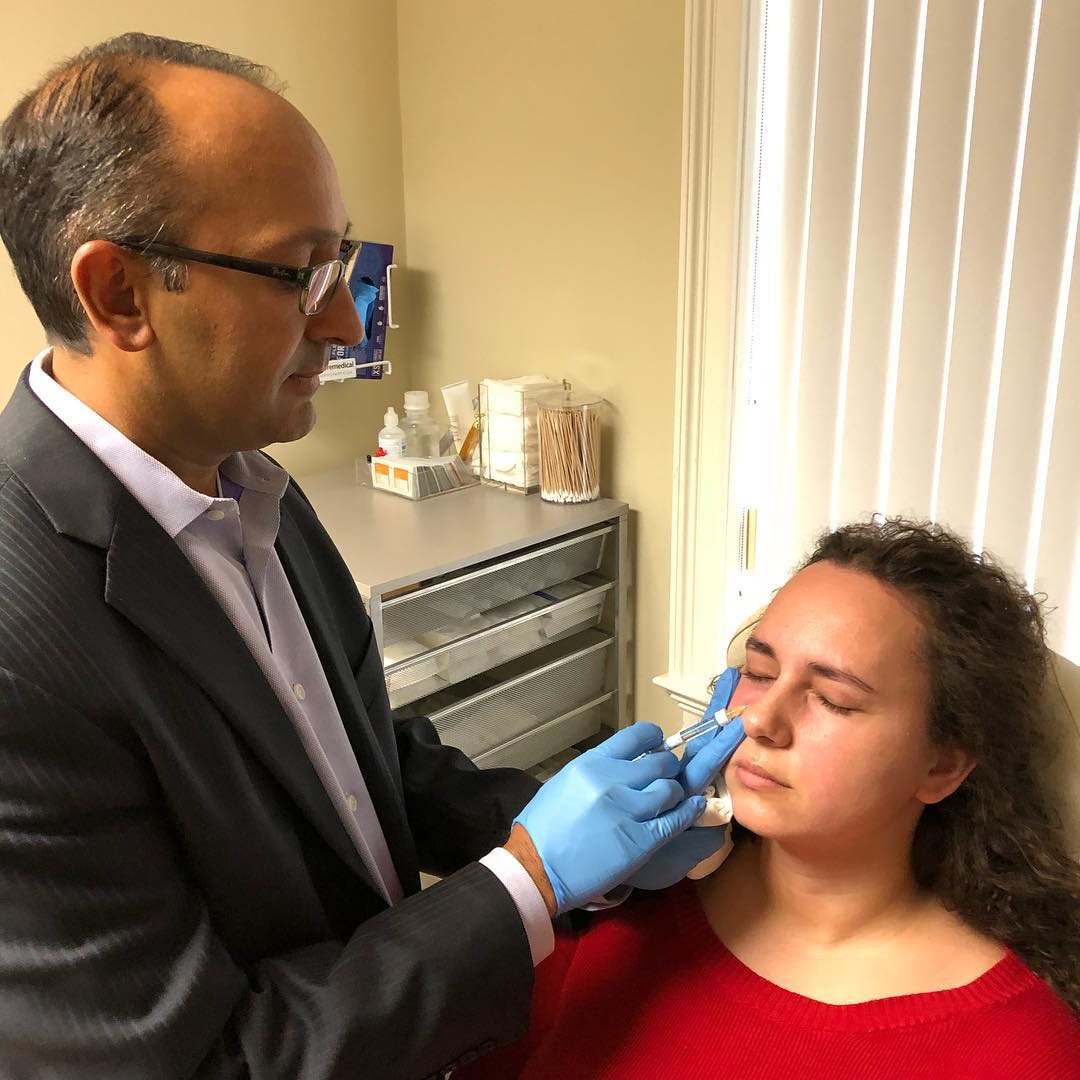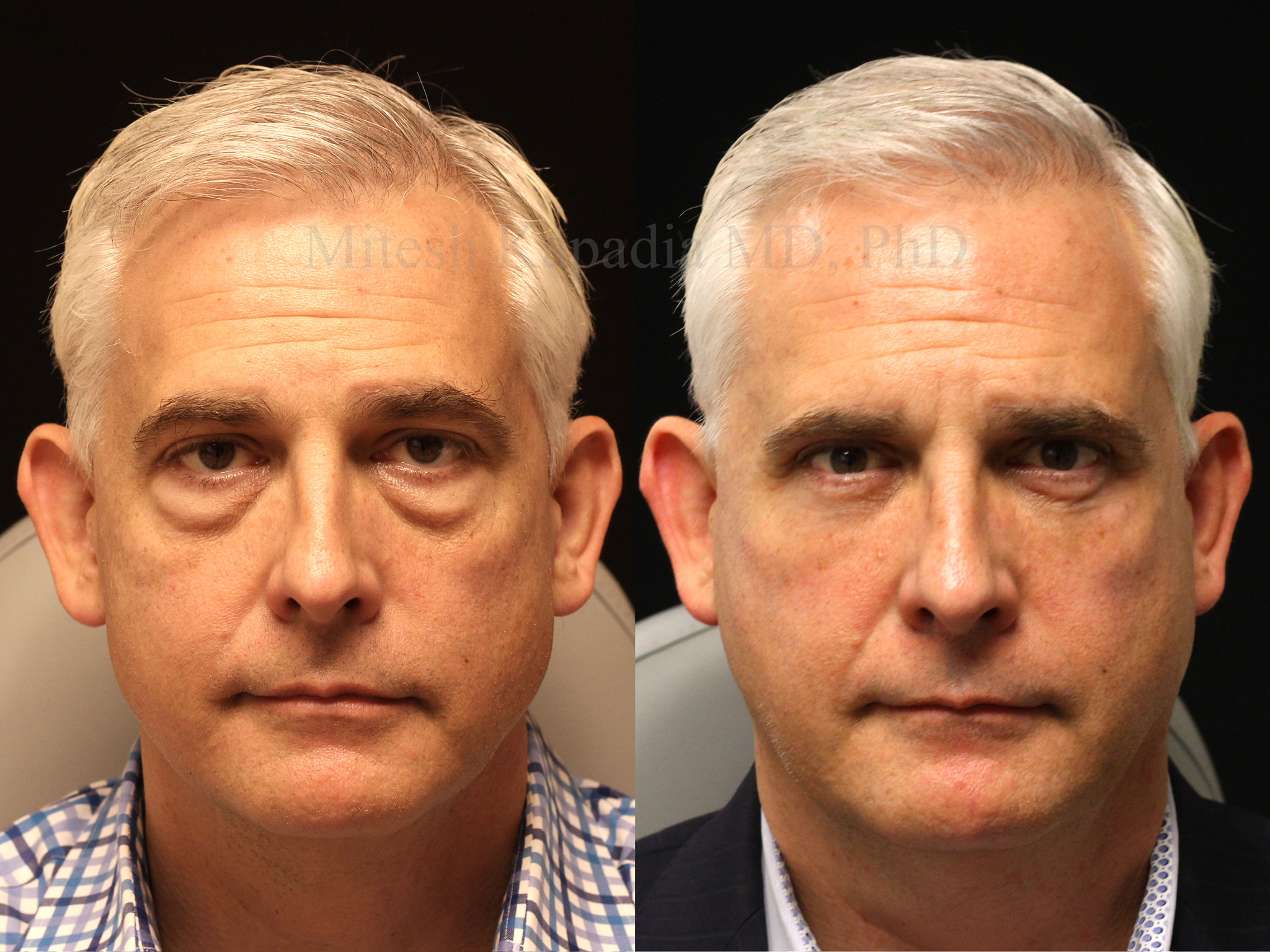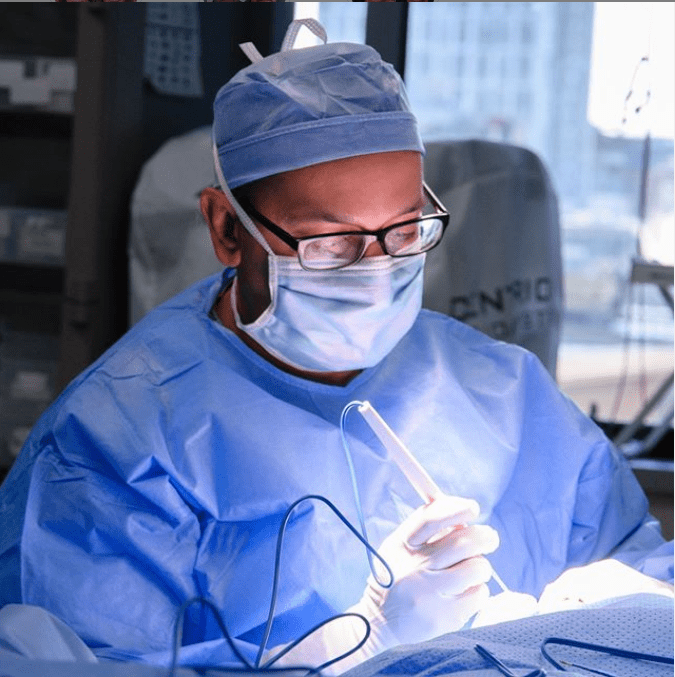Author
Mikayla Vosseller
Share

There are three different conditions which can cause droopy eyelids, each of which is treated differently. Many people with droopy eyelids have a condition known as dermatochalasis, excess upper eyelid skin. A mild to moderate amount of excess eyelid skin results in a tired, sad appearance. An advanced amount of excess eyelid skin can block parts of a patient’s peripheral vision, especially at the top and sides. An example of advanced dermatochalasis is shown below. Notice that this patient’s eyelashes are obscured by the extra skin. If the excess skin were moved away, we would see that her eyelid margin is in a normal position and fully clears her pupil.
Patient with advanced dermatochalasis
Before and after eyelid surgery photos
Dermatochalasis is corrected by removal of excess skin through a procedure known as upper eyelid blepharoplasty, commonly known as eye lift. Upper eyelid blepharoplasty surgery may be performed for cosmetic reasons, to improve a patient’s appearance, or for functional reasons, to improve a patient’s peripheral vision. During cosmetic upper eyelid blepharoplasty, puffiness in the nasal corner of the upper eyelid may be treated by removal of excess fat in this location.
In contrast to dermatochalasis (excess skin), ptosis refers to an abnormal position of the eyelid margin. A person may be born with drooping of either one of both eyelids, a condition known as congenital ptosis. However, the vast majority of patients have normal eyelids when they are born and develop droopy eyelids in adulthood, a condition known as acquired ptosis. Patients with ptosis require a throrough evaluation as this condition may sometimes be caused by neurologic or neuromuscular disorders such as myasthenia gravis, Horner’s syndrome, myotonic dystrophy or even a type of brain aneurysm. Most often, ptosis is caused by weak attachments between the eyelid muscles and underlying eyelid structures. Ptosis in young children can lead to permanent vision loss if not adequately treated.
An example of a patient with acquired ptosis is shown below. Notice the difference compared to the prior photo. There is only a mild amount of excess eyelid skin. Rather, the entire eyelid is in a lower position than it should be. In this patient, both eyelids are too low, but the right upper eyelid is clearly much lower than the left. In lay terms, this condition is sometimes referred to as a lazy eye, but because this term can refer to so many other types of eye or eyelid problems it is not a good description of the condition.
Patient with acquired ptosis
Before and after ptosis surgery photos
Surgery to correct ptosis is more involved than blepharoplasty surgery and is usually only performed by eyelid surgery specialists. Ptosis surgery requires adjusting the position of one of the two muscles which elevate the eyelid. Dr. Kapadia is one of only two surgeons in the Boston area, and one of the few across the country, who can perform this surgery entirely through an internal approach on the back of the eyelid. Because there is no external incision on the eyelid skin, there is less swelling after surgery and patients can frequently return to work within a few days.
Ptosis frequently coexists with dermatochalasis and both problems can be treated at the same time. I frequently see patients who have had upper eyelid blepharoplasty surgery by other physicians and still feel that they have droopy eyelids. This problem is most often caused by uncorrected ptosis. If an eyelid is droopy to due to ptosis or a combination of ptosis and dermatochalasis, a blepharoplasty alone will not fix the problem.
The third factor to consider when evaluating a patient with droopy eyelids is the position of the brow. A droopy eyebrow is referred to as brow ptosis and often coexists with dermatochalasis and ptosis. In most men, the optimal position of the brow is at the bony rim above the eye. In women, the optimal position of the brow is above this rim, especially on the lateral side. The patient shown below demonstrates a mild to moderate amount brow ptosis. He does have excess eyelid skin, but the amount of skin is accentuated because his brows have descended to a lower position than when he was younger.
Patient with brow ptosis
Brow ptosis is repaired with a brow lift, which can be performed in a number of different ways. Dr. Kapadia’s favorite way to correct a mild amount of brow ptosis is through internal sutures at the time of blepharoplasty. This results in a mild, but very natural brow lift. Severe amounts of brow ptosis may require an external incision above the brows. This type of incision may leave a permanent scar, and is usually reserved for extreme cases of brow ptosis with significant vision loss. If this type of surgery is recommended, the risk of a scarring is discussed with patients prior to surgery. A brow lift can also be performed through small incisions in the scalp above the forehead, an endoscopic brow lift. Dr. Kapadia rarely recommends this type of surgery for his patients as the results often do not last more than a few years. If not done properly, it can leave patients with a very unnatural, surprised look. The internet is full of photos of patients, especially Hollywood celebrities, who have had bad brow lifts. Dr. Kapadia finds that an internal brow lift, performed at the time of blepharoplasty leaves patients with a very natural appearance.
The vast majority of patients with a mild amount of brow ptosis can be treated with blepharoplasty surgery alone without changing brow position.








